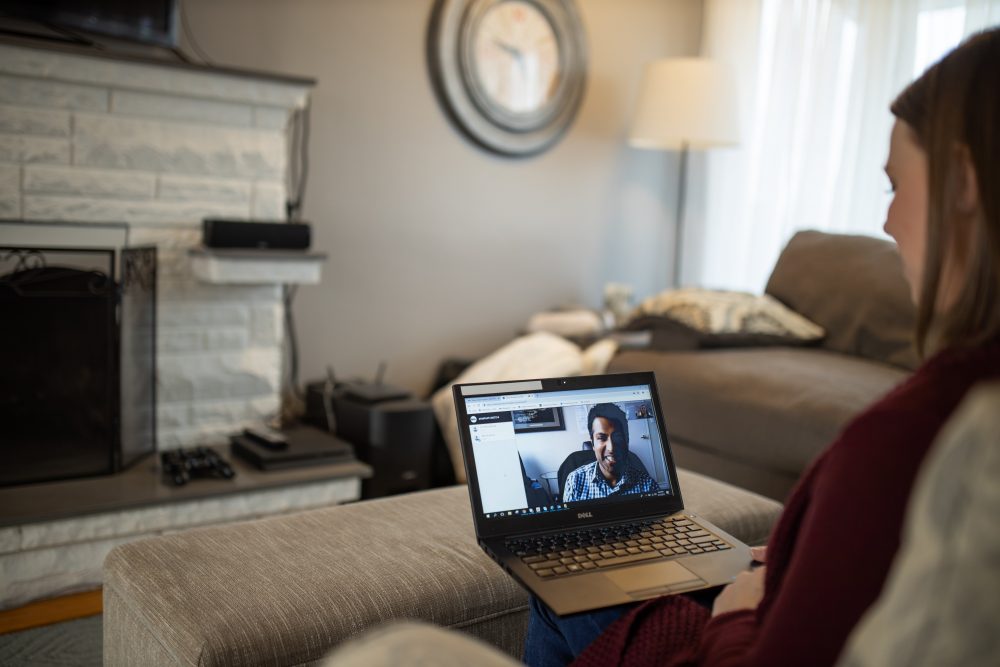Anna has ulcerative colitis and splits her time between her Toronto home and London, England. Having the option of checking in with her gastroenterologist Dr. Neeraj Narula in a virtual visit gives her peace of mind no matter where she is.
The 30-year-old is part of a pilot project into using video conferencing for appointments at adult ambulatory clinics at Hamilton Health Sciences (HHS).
“It was as if I was there,” says Anna, of her e-visit. “Dr. Narula is a terrific doctor. He answers my emails when I have questions or concerns but it’s completely different to see him and talk to him.”
The option of e-visits is a “luxury” she is grateful to have.
“I think it’s incredible. Turning on the computer is easy.”
“I think it’s incredible. Even though Toronto isn’t all that far from Hamilton, it’s very hard for me to make the trek when I’m not feeling well. Turning on the computer is easy.”
“E-visits make the appointment only about the patient’s health, not about the stress of getting there,” says Nate VandenDool, clinical manager of seven specialist clinics at HHS and project lead.
“In addition to improving the patient’s experience, we’re trying to demonstrate that e-visits reduce cancellations and no-shows because they are more convenient for patients and that they make better use of a physician’s time. We also think we can demonstrate they provide improved access to a specialist’s care, too.”
In addition, patients’ risk of being exposed to illness at the hospital is eliminated. It saves them time and money, and reduces their reliance on the physical hospital.
“If we can keep people well at home, with the proper access to specialty care, they will be less likely to visit the ER or be admitted to hospital,” says Nate.
it gives a greater number of options for patients to engage in health care
The pilot is working with the Ontario Telemedicine Network (OTN) to test e-visits with patients in a number of areas throughout HHS. Participating patients are sent a link to connect to a secured call through the OTN portal on a computer, tablet or smartphone. Once the physician clicks in, the two are connected.
“There’s interest from physicians to use e-visits as an opportunity to optimize service delivery and efficiency,” said Dr. Ted Xenodemetropoulos, a gastroenterologist at HHS and physician lead on the e-visits project. “It’s an exciting and very personally fulfilling program.”
He says shifting routine follow-ups to an e-visit format allows clinics to reallocate premium time to acute, complex cases, which then don’t end up in the emergency department.
“This is a program that’s meant to allow for increased convenience while giving a greater number of options for patients to engage in health care. That’s extremely valuable.”
In addition to shifting clinic follow-ups to e-visits, HHS is exploring other applications for virtual care which may reduce visits to the emergency departments and support earlier discharge. This can be seen in both the SMArTVIEW project and REdireCT TAVI.

